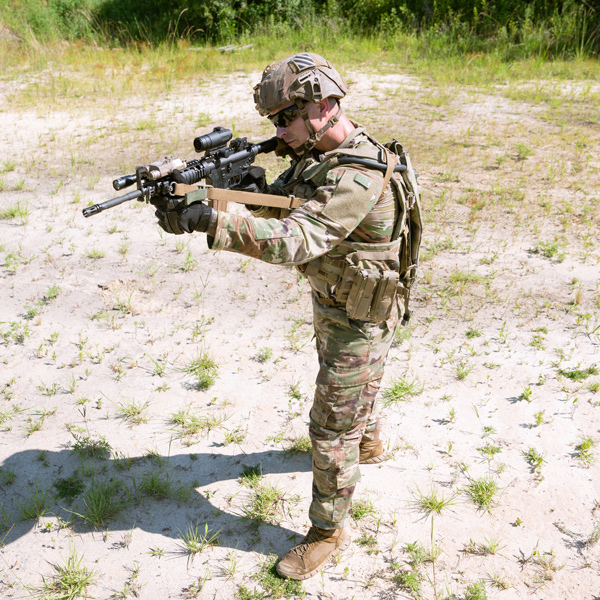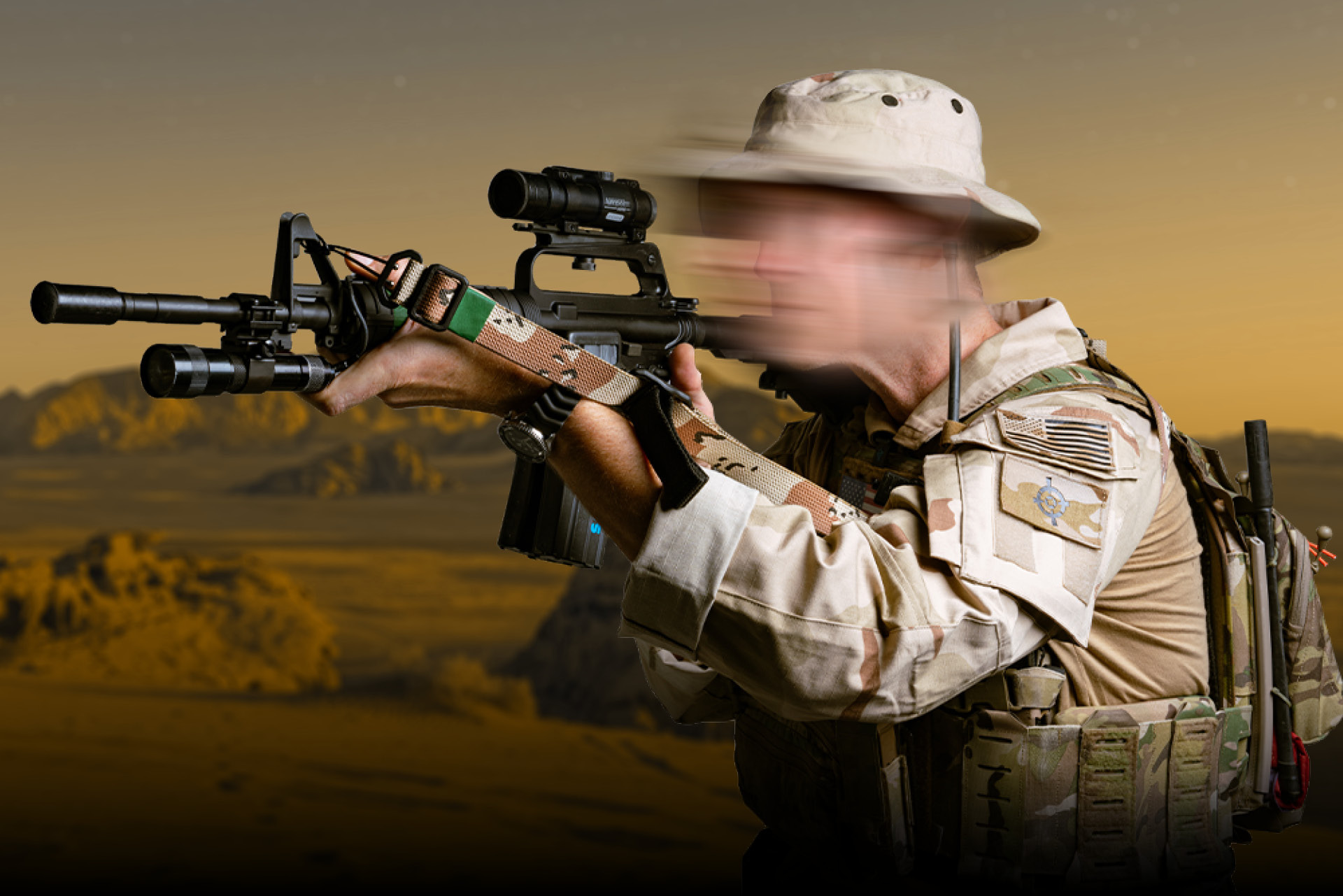Aug 20th 2024
Using a Rifle Sling for Stability, Aim, and So Much More
This week’s blog article was brought to you by industry friend, Chris Sizelove
Always Better® | August 21st, 2024
Last week’s article “Does a Red Dot Sight Really Make You a Better Shooter?” hinted that we’d be bringing you more on the topic of using slings properly to enhance your marksmanship capabilities. We don’t like teasing and not delivering, so here’s the follow up piece for your enjoyment:
Even though the Army isn’t known for their elegant use of words that can be coherently translated into real world scenarios, when it comes to Rifle Marksmanship they communicate certain techniques quite well.
People smarter than me broke down the process of placing a bullet where it’s intended to be (i.e. “marksmanship,” not to be confused with “gunfighting” but that’s a topic for a different day). They took these component parts, put them into the proper order of sequence, and finally gave it all a name: The Functional Elements of the Shot Process. Sure, we can quibble a few degrees left and right on each of them, but generally speaking, it's one of the Army’s more solid doctrines.
They are thus: Stability, Aim, Control, and then Movement.
Here is where the quibbling starts. Are these elements in the proper order? Which comes first, the Stability or the Aim? Do we Control the weapon properly to achieve either? Should Movement be last, or first?
Those are all great lines of logical thinking and should be viewed as a circular pattern versus a linear progression, HOWEVER COMMA, I will firmly plant my flag and die on the hill below.
We cannot efficiently or effectively Aim a weapon in order to achieve an acceptable sight picture without first having enough Stability in which to do so. So at least those two are in the proper order, which frees up time and beer to continue discussing (read that: arguing) over the other two.

Stability needs to be viewed as a variable on a sliding scale. The variable can further be broken down into two categories:
- You (the shooter) and your “issues.” Those issues can span from your mental comfort level with the weapon to environmental factors affecting you at the time. (I.e. being cold, wet, tired, hungry, or just flat uncomfortable carrying a firearm for however long the mission requires.)
- The target and its “issues.” How small is it relative to your sights (its actual size or its distance from you making it appear small)? How many times will you need to place bullets into that target to get the desired effect?
Mastering Rifle Stability

How much stability you’ll need in order to produce the desired results on target is that sliding scale between a tasty mixed cocktail of your ability to control and combine the variables listed above into the shot process – OR – you taking a bite out of a shit sandwich due to your inability to control or combine the variables listed above on said scale.
Most shooters will look towards their environment first for enhanced stability if needed. For example, placing a weapon up against/on/over/around something in an effort to get the pointy end of the rifle to stop wiggling and achieve a workable sight picture. This can be a good option… until the environment isn’t offering you anything of the sort.
I like to take my environment with me, so to speak, in the form of an adjustable sling as well as the knowledge on how to use it to get said pointy end to stop moving around so much under a variety of different circumstances both pre and post shot. It’s akin to having that “something” attached to me and the weapon as a rule instead of having to look around in my environment hoping to find something in my moment of need when time is of the essence and stress levels are elevated.
The rifle sling is one of the most overlooked and underutilized pieces of equipment. Depending on your early exposure and upbringing on the topic of rifles you may view the rifle sling as nothing but a carry strap, something to be minimized entirely, or if you are a graduate of the United States Marine Corps boot camp – that it is critical to applied marksmanship. The truth is somewhere in between and quite simple really.

“The rifle sling is simply a tool that when used correctly, helps to control variables in the shot process by performing as a stability aid, control implement, and movement support device, all in concert to achieve an acceptable aim under varying circumstances.”
-Unknown (maybe me, but since I’ve never had an original thought in my life, I highly doubt it)
So bottom line, if you don’t have a sling that’s capable of doing that in your moment of need – either due to design issues or sling size and fitment issues, then getting a Vickers Sling or GMT Sling and the education to size it and employ it may be for you. Because some targets and environments won’t care about your “issues.”
And stay tuned, as using a sling for marksmanship is only 1 of the 4 points of a duty sling. I’m sure the editor will beat me up to vomit words on the other three points here shortly….
About Blue Force Gear®
About Blue Force Gear: Blue Force Gear, headquartered in Pooler, Georgia, has been a trusted name in professional-grade gear and accessories for two decades. Their commitment to excellence, innovative designs, and use of premium materials have made them a favorite among military, law enforcement, and recreational shooters worldwide.
Press Contact
PR Contact: Marketing@blueforcegear.com
Sales and Dealer Contact: Sales@blueforcegear.com

